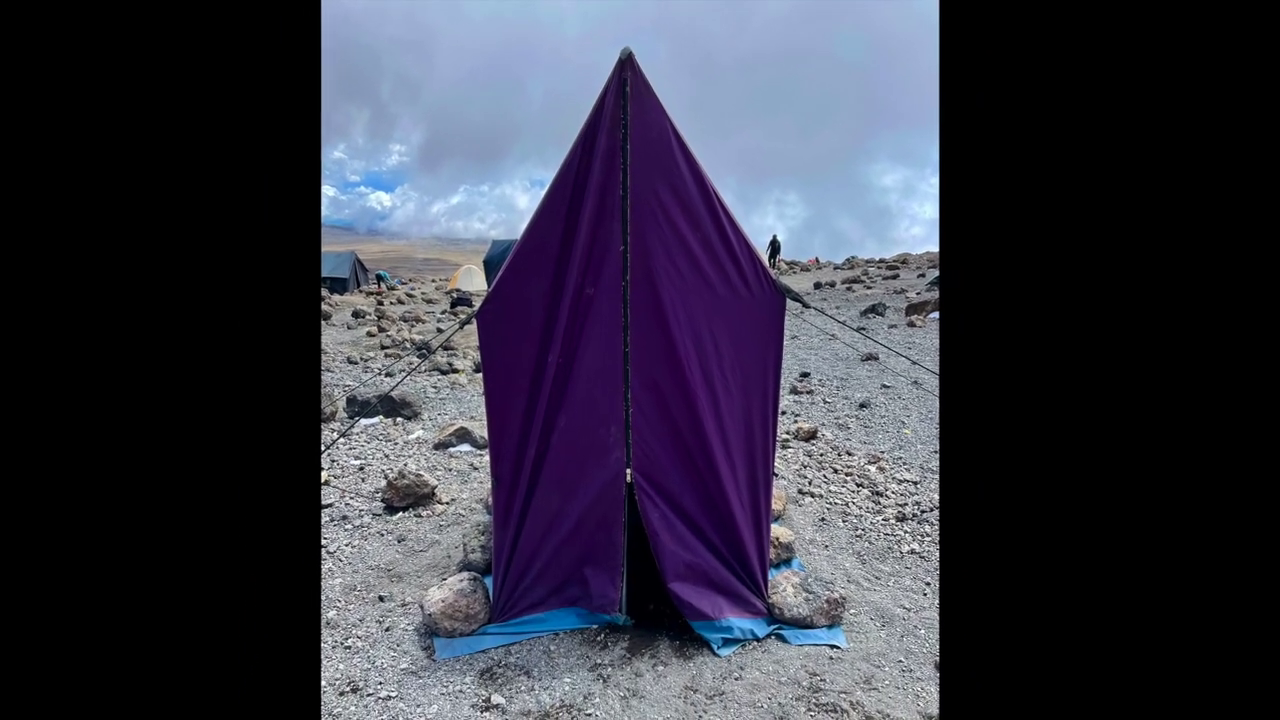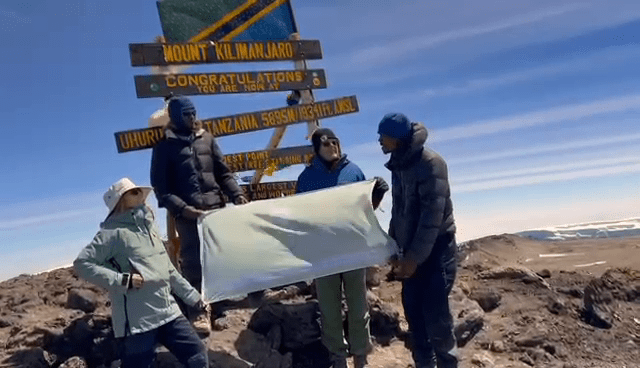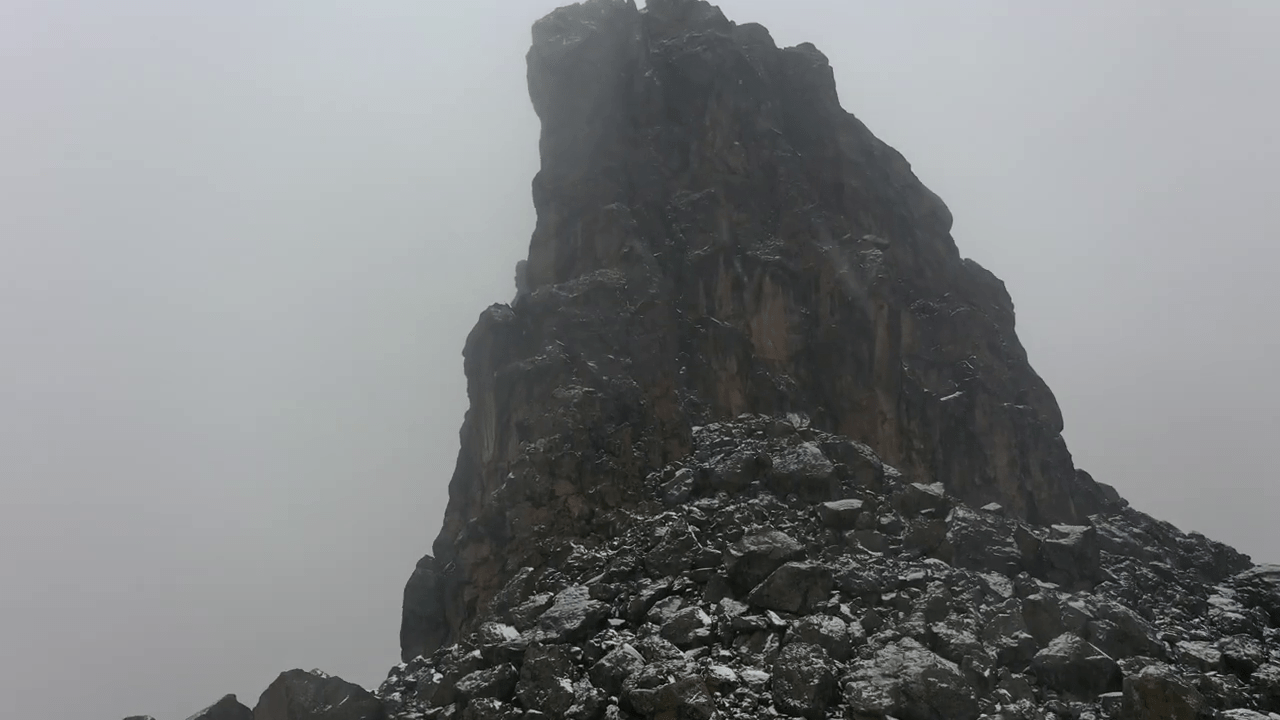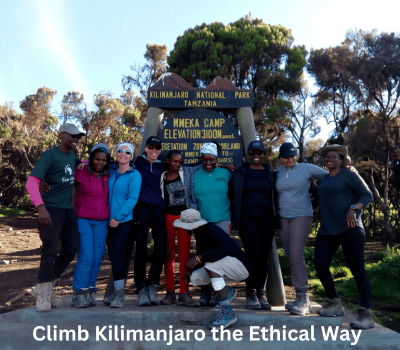What is the Best Time to Climb Kilimanjaro Afrika

Introduction
Mount Kilimanjaro—Africa’s tallest mountain and one of the world’s most iconic treks—is a dream destination for thousands of adventurers each year. But while many focus on routes, gear, or fitness, there’s one question that often determines the success and enjoyment of the climb: What is the best time to climb Kilimanjaro Afrika?
The timing of your trek impacts everything: trail conditions, visibility, temperature, your summit success rate, and even how crowded the routes are. Unlike other mountain ranges, Kilimanjaro sits near the equator, which means it doesn’t follow traditional four-season patterns. Instead, it experiences distinct wet and dry seasons, each with its own pros and cons.
Whether you’re planning a solo adventure, joining a group climb, or preparing for a luxury trek, understanding Kilimanjaro’s seasonal variations is key to making the most of your journey. In this in-depth guide, we’ll break down the climate by season and month, evaluate the best times for each route, and help you align your climb with your personal goals—whether that’s clear summit views, fewer crowds, or lower costs.
We’ll also point you to the right itineraries like the 7 Days Lemosho Route, 8 Days Northern Circuit, and more so you can confidently plan your ideal climb with
Eco-Africa Climbing —a local Tanzanian company with global standards and sustainability at its core.
Understanding Kilimanjaro’s Climate
Overview of Kilimanjaro’s Weather Patterns
Kilimanjaro’s weather is heavily influenced by its unique geography and towering elevation. It rises dramatically from the savannah to nearly 6,000 meters above sea level, creating its own weather systems. The mountain experiences two primary dry seasons—January to March and June to October—and two rainy seasons—April to May (long rains) and November (short rains).
While it’s technically possible to climb Kilimanjaro year-round, most climbers avoid the rainy months due to slippery trails, heavy fog, and reduced summit visibility. The dry months offer better conditions, but also come with higher demand and busier trails.
Here’s a quick snapshot:
- Best Conditions: February, August, and September
- Most Crowded: July, August, December holidays
- Least Crowded: March, June, and November
We’ll cover these in detail in upcoming sections so you can choose based on what matters most to you—whether that’s peak summit weather or peaceful solitude.
Impact of Altitude on Climate
Another important factor is altitude. Kilimanjaro spans five major climate zones, each with its own weather, vegetation, and temperature:
- 1. Cultivation Zone (800–1,800m): Warm and humid farmland areas
- 2. Rainforest Zone (1,800–2,800m): Wettest part of the mountain with thick jungle and wildlife
- 3. Moorland Zone (2,800–4,000m): Cooler, semi-arid with giant heathers and clear skies
- 4. Alpine Desert (4,000–5,000m): Dry, dusty, cold, and exposed terrain
- 5. Arctic Zone (5,000–5,895m): Freezing cold with glaciers, snow, and high winds
Temperatures can drop to -20°C (–4°F) at night near the summit, even during the dry season. That’s why the time of year matters not only for comfort but also for safety and overall enjoyment of your trek.
Dry Seasons: Optimal Climbing Windows
January to March: Clear Skies and Snow-Capped Peaks
January through March is the first dry season of the year. This is one of the best times to climb Kilimanjaro if you’re looking for fewer crowds, mild weather, and a higher chance of snow at the summit.
Conditions to expect:
- Weather: Warm days, cool nights, low rainfall
- Visibility: Generally excellent—clear skies and epic sunrise views
- Crowds: Medium—fewer climbers than summer months
- Routes: All routes accessible, including Lemosho, Machame, and Northern Circuit
Many photographers and first-time trekkers choose this window for its great balance of trail condition and scenery. If you enjoy climbing in peaceful surroundings and don’t mind a bit of summit snow, February in particular is excellent.
June to October: Stable Weather and Scenic Views
The longest dry season spans from June to October, and it’s also the most popular time to climb. If you’re after the safest weather and highest summit success rates, this is your window.
What to expect:
- Weather: Cool mornings, warm afternoons, very low chance of rain
- Visibility: Spectacular sunsets, starry nights, clear summit views
- Crowds: High—especially July through September
- Routes: Most popular include 7 Days Machame, 8 Days Lemosho, and 9 Days Northern Circuit
If you plan to climb during this period, book well in advance—especially if you’re joining a group tour through the Kilimanjaro Group Join program or during peak holiday weeks.
Wet Seasons: Challenges and Considerations
April to May: Heavy Rains and Muddy Trails
The long rainy season from April to May is considered the least favorable time to climb Kilimanjaro. Trails—especially in the rainforest zone—can become extremely muddy, making ascents difficult and treacherous. Visibility is often low, and summit success rates tend to drop.
However, for experienced adventurers or those seeking extreme solitude, the Rongai Route on the drier northern side can still be viable.
November: Short Rains and Unpredictable Conditions
The short rains arrive in November and typically bring afternoon showers and damp mornings. It’s less intense than April–May but still requires solid rain gear and mental preparation. The trade-off? Lower prices and virtually no crowds.
Again, Rongai is the best bet here. You’ll get misty, moody forests and a wild, introspective trek that some climbers find more spiritual and memorable than any sunny summit photo.
Route-Specific Best Times to Climb Kilimanjaro
Machame Route
The Machame Route—often called the “Whiskey Route”—is one of the most popular paths up Kilimanjaro. Known for its steep trails and beautiful scenery, it’s best suited for climbers who want a physical challenge with high success potential. The best time to climb Machame is during the dry months of January to March and June to October, when the trail is drier and less slippery.
Because Machame begins in the lush rainforest zone, it can become very muddy during the wet seasons. For a balanced experience, we recommend the 7 Days Machame Route, which allows more time to acclimatize and increases summit success rates.
Lemosho Route
The Lemosho Route is a scenic and less crowded option ideal for first-time climbers. It begins on the western side of the mountain and traverses through varied landscapes, offering panoramic views and excellent acclimatization. Like Machame, it’s best during January to March and June to October.
Choose between the 7 Days or 8 Days Lemosho Route to maximize your experience while minimizing the risk of altitude sickness.
Northern Circuit Route
The Northern Circuit is Kilimanjaro’s longest and most remote trail. It circles the mountain’s northern slopes, which receive less rainfall than the southern side, making it a suitable choice even during the shoulder months like April and November.
Its extended duration (8 to 9 days) provides excellent acclimatization. If you’re aiming for safety and solitude, this is the ultimate choice. Explore the 8 Days or 9 Days Northern Circuit Route options.
Rongai Route
Rongai is the driest route on Kilimanjaro and approaches the summit from the north near the Kenyan border. Its dry conditions make it the best option for climbs during the wet seasons of April–May and November.
This is a great route if you want to avoid the crowds and experience a different side of the mountain. Consider the 7 Days Rongai Route for optimal altitude adaptation and enjoyment.
Marangu Route
Also known as the “Coca-Cola Route,” Marangu is the only trail on Kilimanjaro that uses huts for overnight stays. This makes it more comfortable during the wetter months—but it still suffers from poor acclimatization due to its shorter itinerary.
The best time to attempt Marangu is also January to March and June to October. For those short on time, the 6 Days Marangu Route offers the best success balance.
Aligning Your Climb with Travel Goals
Seeking Solitude: Off-Peak Months
If you want peace, quiet, and a more personal connection with the mountain, avoid the peak seasons of July, August, and December. Instead, opt for March, early June, or late October, when crowds are lighter and the trails feel more serene.
Routes like the Shira Route or Northern Circuit offer more remote terrain and quieter camps even during busier times.
Budget-Friendly Options: Shoulder Seasons
Traveling during April–May or November can save you money on flights, accommodation, and even climb packages. These are considered low seasons due to rain, but if you’re well-prepared and choose a smart route like Rongai, you can enjoy a great climb at a lower cost.
Check out the full breakdown of costs on our Kilimanjaro Price Guide for details on what’s included.
Wildlife and Cultural Events: Combining Safari and Trek
For the ultimate Tanzanian adventure, combine your Kilimanjaro climb with a wildlife safari or cultural experience. The Serengeti migration peaks from July to October, and Zanzibar’s festivals heat up in July and August.
Plan your climb with Eco-Africa Climbing to build a custom itinerary that includes both the trek and a world-class safari or beach escape.
Preparing for Your Climb: Training and Gear
Physical Conditioning and Training Tips
You don’t need to be a marathon runner to summit Kilimanjaro, but you do need to be in good physical condition. The mountain requires stamina, mental resilience, and the ability to walk long hours for several consecutive days.
To prepare, start a fitness routine at least 8–12 weeks before your climb:
- Hiking Practice: Train with long hikes on varied terrain and elevation gain.
- Cardio Training: Incorporate walking, jogging, swimming, or cycling 3–5 times per week.
- Stair Climbing: Simulates uphill trekking. Add a weighted backpack for realism.
- Strength Training: Focus on legs, core, and back to support long hikes.
- Back-to-Back Days: Mimic the actual climb with weekend hikes on consecutive days.
Most important? Practice pacing. Kilimanjaro isn’t about speed—it’s about endurance. Hike “pole pole” (slowly, slowly) and your chances of summiting improve dramatically.
Essential Gear for Kilimanjaro
Having the right gear makes a huge difference, especially when facing rapid weather changes and freezing summit nights. Here’s what you’ll need:
- Layered clothing system: base layers, mid-layers, down jacket, waterproof shell
- Sturdy, waterproof hiking boots (broken in!)
- Thermal sleeping bag rated to -10°C or below
- Daypack with rain cover
- Headlamp with extra batteries
- Water bottles/hydration bladder
- Personal meds and basic first aid kit
- Trekking poles (especially useful on descent)
You can also rent gear in Moshi through Eco-Africa Climbing if you don’t want to invest in everything upfront.
Health and Safety on Kilimanjaro
Altitude Sickness and Acclimatization
Altitude sickness (AMS) is the greatest risk on Kilimanjaro. It can affect anyone, regardless of fitness. Symptoms include headache, nausea, dizziness, and fatigue. In rare cases, severe AMS can lead to HAPE or HACE—life-threatening conditions.
To stay safe:
- Choose a longer route (like the 8 Days Lemosho or 9 Days Northern Circuit) for better acclimatization
- Ascend slowly and hydrate often
- Listen to your guides and report symptoms early
- Consider medication like Diamox if recommended by your doctor
All climbs with Eco-Africa Climbing include daily health checks, pulse oximeter monitoring, and emergency oxygen.
Vaccinations and Travel Health Tips
Before entering Tanzania, check the latest requirements for:
- Yellow fever (mandatory if traveling through endemic countries)
- Hepatitis A & B, Typhoid, Tetanus (recommended)
- Malaria precautions (not a risk on the mountain, but relevant if visiting lowland areas)
Visit your travel clinic 4–6 weeks before departure. And don’t forget to pack any necessary prescriptions and altitude medications in your carry-on.
Booking and Logistics
Choosing the Right Tour Operator
Kilimanjaro is a regulated mountain—you must book through a licensed tour operator. But not all companies are equal. Choose one that:
- Is a proud KPAP partner (like Eco-Africa Climbing)
- Supports porter welfare and sustainable travel
- Offers transparent pricing (see our Kilimanjaro price guide)
- Provides emergency equipment and medically trained guides
Whether you want a group join experience, solo adventure, or private luxury climb, we’ve got options tailored to your dream trek.
Permits, Visas, and Timing
Your operator will handle all park permits. You’ll need a Tanzanian tourist visa, which can be obtained online (e-visa) or on arrival. Climbing permits are valid for your route duration only—so choose wisely.
Best practice? Book your trek 3–6 months in advance, especially during peak seasons (July–October, December).
FAQs: Best Time to Climb Kilimanjaro Afrika
Is Kilimanjaro open for climbing all year?
Yes, it’s a year-round destination. But dry seasons (January–March, June–October) offer the best conditions and success rates.
Which route has the best success rate?
Longer routes like Lemosho and Northern Circuit have success rates above 90% due to better acclimatization.
Can I summit Kilimanjaro with no hiking experience?
Yes! With proper training, mental preparation, and a good guide, many first-timers summit successfully. Choose routes like 8 Days Lemosho for a safer journey.
Is it possible to climb in November?
Yes, but expect afternoon rains. Stick to the Rongai Route and bring waterproof gear.
How cold is it at the summit?
Temperatures can drop to –20°C (–4°F) before sunrise. Dress in layers and wear high-quality insulated gear.
Helpful Resources for Climbing Kilimanjaro
- KPAP – Kilimanjaro Porters Assistance Project
- TANAPA – Kilimanjaro National Park
- WHO Travel Health Advice
- Mount Kilimanjaro on Google Maps
- Tanzania Tourism Board
Conclusion: When Will You Climb Kilimanjaro?
The best time to climb Kilimanjaro Afrika depends on your goals—whether it’s great weather, low crowds, snow-capped peaks, or saving money. But no matter the season, with the right route, gear, and guide team, your summit dream is within reach.
Let Eco-Africa Climbing be your partner on this journey. As a proud KPAP partner and sustainable tour company, we offer international-level service with authentic Tanzanian hospitality. Join a Group Climb, plan a private trek, or go solo—we’ll help you make it unforgettable.
Contact Eco-Africa Climbing now and let’s start planning your ultimate climb.
Share:
Related Posts

bathroom on mountain kilimanjaro
Bathroom on Mountain Kilimanjaro: What to Expect and How to Prepare Introduction One of the most common — and least discussed — questions from people

Are Guides Readily Available in Tanzania Without Prior Booking?
Are Guides Readily Available in Tanzania Without Prior Booking? Introduction: Should You Risk Climbing Without Pre-Booking? Climbing Mount Kilimanjaro is a dream for many adventurers.

How Can I Find a Reliable Local Guide for My Kilimanjaro Expedition?
How Can I Find a Reliable Local Guide for My Kilimanjaro Expedition? Introduction: Why the Right Guide Is Key to Kilimanjaro Success Climbing Mount Kilimanjaro

Is Climbing Kilimanjaro Dangerous for Individuals Without Mountaineering Experience?
Is Climbing Kilimanjaro Dangerous for Individuals Without Mountaineering Experience? Introduction: The Myth of Danger and Experience Many aspiring adventurers wonder if climbing Mount Kilimanjaro is
